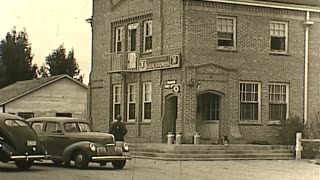Premium Only Content

The Temple of Moloch
"The Temple of Moloch" is a 1914 silent film with a plot deeply rooted in social commentary on industrial practices and public health:
Setting and Plot: The narrative is set in a small village where Harrison Pratt owns both the local potteries and the dilapidated tenements where his workers reside. Dr. Jordan, the village's health officer, discovers that the unsanitary conditions in both the workplace and living areas are causing a high incidence of tuberculosis.
Conflict: Dr. Jordan repeatedly tries to convince Pratt to improve conditions, but his pleas are met with disdain. Personal stakes rise as Dr. Jordan falls in love with Pratt's daughter, Eloise, who initially supports Dr. Jordan's work but later feels betrayed when he publicly criticizes her father's business practices in the newspaper, likening them to a "Temple of Moloch" where children are sacrificed to greed.
Turning Point: The plot takes a dramatic turn when Eloise and her brother are diagnosed with tuberculosis, leading to a confrontation with Eric Swanson, a former employee whose life was ruined by the conditions in Pratt's factories. His revelations and the undeniable truth of the situation compel Pratt to reform.
Resolution: The film concludes on a hopeful note with Pratt's decision to improve living and working conditions. Eloise reconciles with Dr. Jordan, returning her engagement ring, and Pratt funds anti-tuberculosis initiatives, symbolizing a Christmas of renewal and amends.
Social Message: "The Temple of Moloch" uses its melodramatic plot to highlight the dire consequences of industrial exploitation and the importance of public health initiatives, reflecting early 20th-century concerns about labor conditions, health, and social responsibility.
Cultural Impact: This film would have served not only as entertainment but also as an educational tool to raise awareness about tuberculosis, industrial health hazards, and the need for reform, embodying the progressive spirit of the era.
-
 11:56
11:56
Archival Moments
2 months agoFinley Expedition, Farson 1940
732 -
 LIVE
LIVE
SpartakusLIVE
6 hours agoThe BADDEST Duo in WZ Exhibits PEAK Physique || Duos w/ Sophiesnazz to start, quads later
16,354 watching -
 DVR
DVR
RattlesnakeTV
17 hours ago $0.03 earnedLIVE DEBATE! Lord Jake vs Crazy Feminist
4.75K1 -
 LIVE
LIVE
Badlands Media
8 hours agoThe Narrative Ep. 35: Codex of Truth
5,925 watching -
 3:55:56
3:55:56
Due Dissidence
11 hours agoSchmuley TRASHES Shapiro, Maxwell Sings For Pardon, Uhuru Doc Preview - Live From St. Louis!
27.9K34 -
 LIVE
LIVE
Lofi Girl
2 years agolofi hip hop radio 📚 - beats to relax/study to
285 watching -
 LIVE
LIVE
PandaSub2000
5 days agoLIVE 9:30pm ET | MADISON VR (The Scariest Game Ever Made)
104 watching -
 2:34:32
2:34:32
Badlands Media
5 days agoCODEX 9/11
270K205 -
 1:53:43
1:53:43
Nerdrotic
6 hours ago $0.27 earnedMysteries of 3I/ATLAS | Forbidden Frontier #113
41.6K4 -
 2:04:21
2:04:21
vivafrei
1 day agoEp. 278: D.C. Peace Wave! Big Tish & Nipple Judge SPANKED! "Maryland Man" Trafficker FREE & MORE?
90.7K109